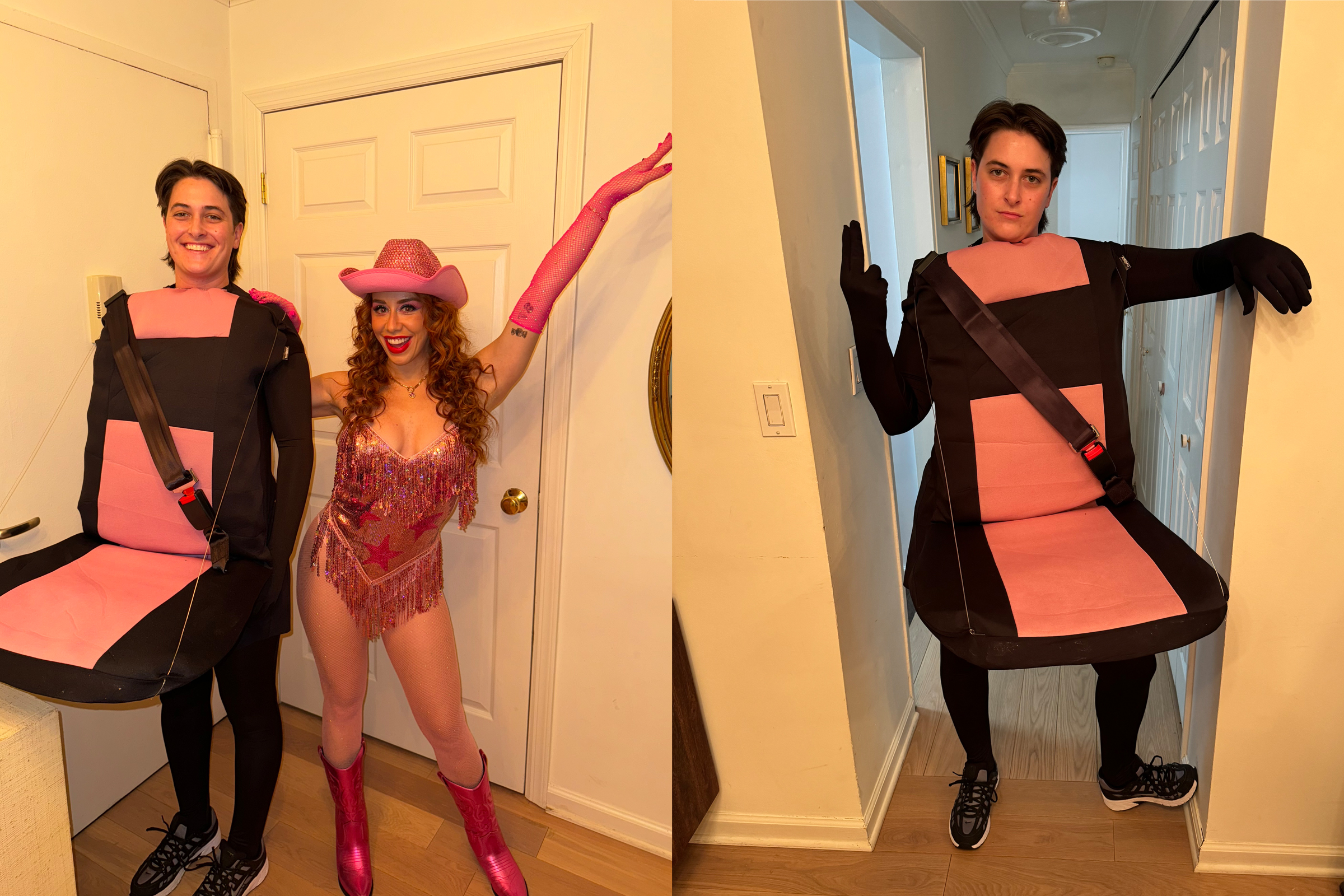Is it your polyester Dorothy from The Wizard of Oz costume purchased from your local Spirit Halloween pop-up store? Nope, put that back. You can leave the recycled Disney princess dresses from years past at the bottom of your hamper, too, because we’re taking something else out of the closet this year …
Gone are the days of trying to look good in a sl*tty costume version of your favorite movie character as we pave the way to normalize wearing a car passenger seat inspired by Chappell Roan’s song “Casual” — complete with a seatbelt — or dressing as the tennis ball from the homoerotic Zendaya blockbuster Challengers (2024) that made us nauseous in the final match scene.

The “gay Halloween” trend is a series of posts showing off unconventional and off-beat pop-culture costumes that — let’s be real — could only be found at a queer Halloween party. Along with a photo of their “gay” costumes, observers of the new unofficial holiday are sharing the short caption: “I hate gay Halloween. What do you mean you’re dressed as ____?”
More often than not, these outfits are ingenious references to discarded, niche, and hyper-specific camp and pop-culture moments — like the lockers from Bottoms (2023) and the “Hooker” from Toy Story (1995) — signaling a renewed interest in people and things culled from the collective subconscious.
Hyperallergic’s own Editor-in-Chief Hrag Vartanian and Publisher Veken Gueyikian have been known to embody the gay Halloween spirit, and their favorite foray was a decade ago with their couple’s costume recreating a famous photograph of art critic Clement Greenberg looking at a Kenneth Noland painting. Super specific? Yes. Necessary? Absolutely, or so gay Halloween dictates.
“Queerness often means you are hyper-aware of how the world sees you and how little changes signify different things because our safety is often connected to passing or hiding, but that is also how we find kinship with others in subtle ways,” Vartanian said.

“In late-19th century London, it was a green carnation to denote a type of male gayness, while in Qing China it was symbolized as a cut sleeve, and in 1920s Berlin it was certain types of male attire for lesbians,” he continued. “So, a look, an outfit, or a juxtaposition changes meaning and allows us to project our imaginations into those visible shifts.”
Choosing a costume each year is our personal hell, but gay Halloween seems to offer a reprieve from the world of the mind-numbingly common bunny ears and angel halos and brings us into the world of queer ways of knowing.

Motti, a queer and trans writer and comedian living in New York City, posted what might be the most viewed costume duo — at 5.1 million views and counting — of the internet craze so far. In a phone interview with Hyperallergic, Motti said gay Halloween is replete with costumes that “think outside of the box” and “reference things that were meaningful, either currently or at a time, to our community.”
Knee-deep in their passenger seat costume, Motti, alongside their girlfriend Britt Migs, also a comedian and dressed as Chappell Roan, brought to life a scene from one of the singer’s hits. “Casual” recounts a toxic situationship — and a sexually explicit moment in a car.

“It’s kind of an inside joke, which is what being queer feels like … like thousands and millions of people being in on the same inside joke,” Motti said.
While some reports have labeled gay Halloween as a meme trend, Motti said they don’t see their costume that way. Instead, they see them as works of ingenuity. “This isn’t something that already exists online,” Motti said.

Motti said that while they expect some people to dismiss gay Halloween as a “chronically online gay thing,” it brings attention to queer space. “Yeah, gay people are chronically online, because what real-life spaces are you really giving us?” they said.
“We’re going to think outside the box and get creative with it because one, it’s fun, but also because we have to,” Motti said. “Look at how drag performers lead culture by being funny: It’s always comedy first, and then it’s the creativity, the beauty, the craftsmanship.”


The author of the trend, Motti said, is still unknown to them. “It kills me that I don’t know who to credit as online creators.”
Motti’s perception of the trend as being a shared “inside joke” that requires thinking outside the box fits into the canon of contemporary queer theory such as Jack Halberstam’s The Queer Art of Failure (2011).

Popular knowledge including media, Halberstam wrote, offers up new forms of queer existence in a world where gay people exist in opposition to conventional heteronormativity.
Halloween, Vartanian said, “allows us to recreate those overlooked memories that may seem slight or forgettable by others and celebrate the absurdity of it.”
“What I find interesting is how many of these supposedly forgettable moments resonate with others,” he added. “One of the best parts of contemporary queerness is looking for the glitter in something others have disposed of or devalued.”


And if you made it this far, here are some queer-coded honorable mentions:

